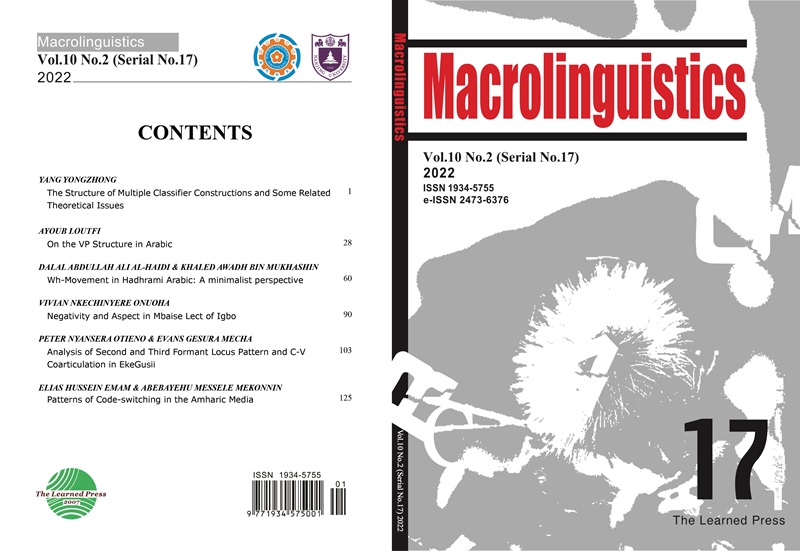konsoids的比较音系学
引用次数: 0
摘要
本文比较了低地东库希特语系中Konsoid亚群的Konso语、diaytata语和Mosittacha语的音系。目的是识别和描述这些语言之间存在的语音相似性和差异性。对两种语言的语音系统、组合、语音策略和音节结构进行分类,以确定两种语言的主要异同模式。在这些语言中发现了一些主要的声音变化,而浊音障碍与浊音障碍的合并是另一个主要发现。本文章由计算机程序翻译,如有差异,请以英文原文为准。
The Comparative Phonology of Konsoid
This study compares the phonology of Konso, Diraytata and Mosittacha languages which belong to the Konsoid subgroup in the Lowland East Cushitic family. The aim is to identify and describe the phonological similarities and differences that exist among these languages. The classification of the languages’ sound systems, gemination, phonotactics and syllable structures are carried out in order to determine the major pattern of differences and similarities. Some major sound changes are discovered and the merger of voiced obstruents into voiceless counterparts is another major finding observed in these languages.
求助全文
通过发布文献求助,成功后即可免费获取论文全文。
去求助
来源期刊
自引率
0.00%
发文量
83
审稿时长
20 weeks
期刊介绍:
Macrolinguistics (ISSN 1934-5755, e-ISSN 2473-6376) is an international academic journal which is specialized in research papers of non-Indo-European linguistics. It is published biannually by The Learned Press and funded by the Double First-Class Initiative of Nanjing University. It aims at contributing to the complementarity and interaction of linguistic research worldwide.

 求助内容:
求助内容: 应助结果提醒方式:
应助结果提醒方式:


